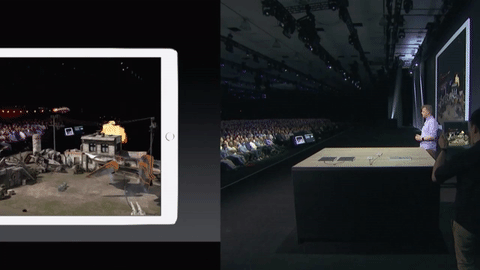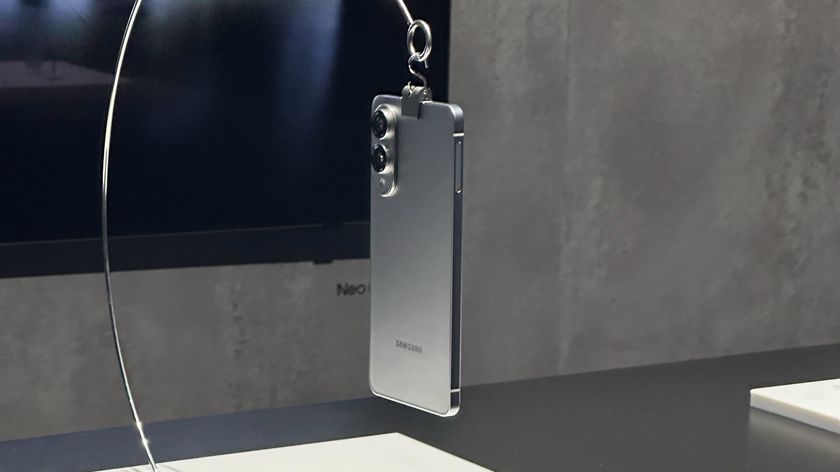How a Craig David gig filled me in on the power of augmented reality
Remixing reality with AR and UK garage's very own phoenix

I never imagined that a Craig David comeback gig would send me into an existential crisis, but it’s funny what 30-degree heat and a few cocktails can do to your critical thinking.
The early-noughties UK garage maestro was playing at the super-posh, all-you-can-eat-lobsterfest and Sloan-ranger-love-in House Festival (which, despite my reservations – and in no small part thanks to a bottomless bucket of vodka-based booze – was actually excellent, in a ‘last days of Rome’ sort of way).
David, it turns out, rising like a MacBook-wielding phoenix from the ashes of the Saturday-morning Popworld scene, was the perfect conduit for my growing dread of the future, given he’s built his public resurrection around remixing the tunes of today’s R’n’B elite with his TS5 show. Because, with no one to fill him in, David himself was in a way being remixed by his very audience.
Selecta reality
Some context. I’m of an age (30) that exists in something of a social media netherworld – old enough to be bored of my long-standing Facebook page, put off by Twitter’s bile and narcissism, and about a decade too aged to use Snapchat without looking like a try-hard, ‘how do you do, fellow kids?’ arse. Unless you’re in secondary school, or trying to convince your LinkedIn contacts you’re a ‘Social Media Expert/Guru/Wizard/Ninja’ to supplement your copywriting career, it’s of my opinion that you should steer well clear of Snapchat.

So while I observe Snapchat developments from an appropriate distance, I don’t use it enough to appreciate its full capabilities these days.
Imagine my inebriated surprise, then, as during the heady heights of David’s ‘7 Days’, two overage Snapchat users in the crowd in front of me used the app to perfectly (and, given the surroundings, inevitably inappropriately) map a native American headdress atop Craig’s beautifully-groomed barnet. We were some distance from the stage, but Snapchat still managed to lock on to David’s head, scaling the culturally-appropriated digital festival wear admirably as David was walking away from us (and the troubles of his pre-comeback life).
It was the second time I’d been floored that day – the first being by my surprisingly deep knowledge of the back-catalogue of Sean Paul, also on the bill. The power of augmented reality is growing exponentially, and it’s no wonder that the likes of Apple are now joining Snapchat and Microsoft (with its HoloLens headset) on this soon-to-be-overflowing gravy train.
Get daily insight, inspiration and deals in your inbox
Sign up for breaking news, reviews, opinion, top tech deals, and more.
But it did (as is now customary with this column) leave me feeling a bit exasperated, and fearful, too.
Augmented reality – the rise and fall
We’re approaching a future where anyone will be able to tweak and spin the world around them in an instant, in their image, to whatever ends they desire. We’ve had Photoshopped fakeries for decades now, but AR takes things to a whole new level. If the rumours are to be believed, Apple (and the industry at large) sees the Next Big Thing™ as being augmented reality glasses.

If they’re adopted with the same fervour as the iPhone, they could more or less become extensions of our own bodies, stuck on the ends of our noses every waking hour of the day, allowing all sorts of real-time digital feedback to be overlaid on the carbon world around us. As the quality of AR technology improves, will we ever be able to believe what we see in this augmented world?
In an age of easily-manipulated readers of fake news and an embattled media struggling to maintain trust in the face of presidential hit-pieces, augmented reality will allow the forces of deception to remix reality in real time. Popping a floppy tongue sticker or anime eyes on a mate’s video chat today may be funny, but, to paraphrase David, we may come to long for the ability to re-e-wind to an age where reality was no more than met the eye.
- Gerald Lynch is TechRadar’s resident futurist. His bi-weekly Future Gazing column casts a critical eye over the technologies and trends that are set to shape our world, bringing back to today a glimpse of tomorrow in the boot of his Delorean.
Gerald is Editor-in-Chief of iMore.com. Previously he was the Executive Editor for TechRadar, taking care of the site's home cinema, gaming, smart home, entertainment and audio output. He loves gaming, but don't expect him to play with you unless your console is hooked up to a 4K HDR screen and a 7.1 surround system. Before TechRadar, Gerald was Editor of Gizmodo UK. He is also the author of 'Get Technology: Upgrade Your Future', published by Aurum Press.











